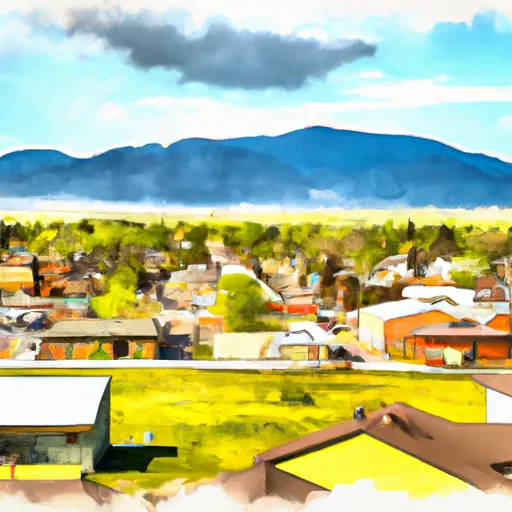-
 Snoflo Premium
Snoflo Premium
Get unlimited access to all our content
With no Ad interruptions! - Start Your Free Trial Login with existing account
Fairfield
Eden Index
Climate
7.2
•
Recreation
2.3
•
Community
•
Safeguard
3.7/10

Fairfield, Montana is a rural town located in the northwestern part of the state. The climate in Fairfield is typical of a semi-arid climate with cold winters and warm summers. The town receives an average of 10 inches of precipitation annually, mostly in the form of snow.
The hydrology constituents in the region include the Sun River, a tributary of the Missouri River. This waterway provides opportunities for fishing and water-based recreation.
Outdoor recreation opportunities in Fairfield include hiking, camping, hunting, and fishing. Nearby national forests and wilderness areas offer scenic trails and abundant wildlife. Additionally, Fairfield is close to the Rocky Mountain Front, a mountain range known for its stunning views and opportunities for outdoor adventure.
What is the Eden Index?
The Snoflo Eden Index serves as a comprehensive rating system for regions, evaluating their desirability through a holistic assessment of climate health, outdoor recreation opportunities, and natural disaster risk, acknowledging the profound impact of these factors on livability and well-being.
Climate Health Indicator (CHI): 7.2
Fairfield receives approximately
316mm of rain per year,
with humidity levels near 63%
and air temperatures averaging around
7°C.
Fairfield has a plant hardyness factor of
4, meaning
plants and agriculture in this region thrive during a short period during spring and early summer. Most
plants will die off during the colder winter months.
By considering the ideal temperature range, reliable water supplies, clean air, and stable seasonal rain or snowpacks, the Climate Health Indicator (CHI) underscores the significance of a healthy climate as the foundation for quality living.
A healthy climate is paramount for ensuring a high quality of life and livability in a region, fostering both physical well-being and environmental harmony. This can be characterized by ideal temperatures, reliable access to water supplies, clean air, and consistent seasonal rain or snowpacks.
Weather Forecast
Streamflow Conditions
Upper Missouri
Area Rivers
Upper Missouri
Snowpack Depths
Upper Missouri
Reservoir Storage Capacity
Upper Missouri
Groundwater Levels
Recreational Opportunity Index (ROI): 2.3
The Recreational Opportunity Index (ROI) recognizes the value of outdoor recreational options, such as parks, hiking trails, camping sites, and fishing spots, while acknowledging that climate plays a pivotal role in ensuring the comfort and consistency of these experiences.
Access to outdoor recreational opportunities, encompassing activities such as parks, hiking, camping, and fishing, is crucial for overall well-being, and the climate plays a pivotal role in enabling and enhancing these experiences, ensuring that individuals can engage in nature-based activities comfortably and consistently.
Camping Areas
| Campground | Campsites | Reservations | Toilets | Showers | Elevation |
|---|---|---|---|---|---|
| Stickney Creek FAS | None | 3,441 ft | |||
| Prewett Creek FAS | 7 | 3,398 ft | |||
| Spite Hill FAS | None | 3,440 ft | |||
| Fairfield City Park | None | 3,979 ft | |||
| Mountain Palace FAS | None | 3,415 ft | |||
| Craig FAS | 11 | 3,451 ft | |||
| Dearborn FAS | None | 3,487 ft | |||
| Mid Canon FAS | 5 | 3,427 ft |
Nearby Fishing
Nearby Ski Areas
Catastrophe Safeguard Index (CSI):
The Catastrophe Safeguard Index (CSI) recognizes that natural disaster risk, encompassing floods, fires, hurricanes, and tornadoes, can drastically affect safety and the overall appeal of an area.
The level of natural disaster risk in a region significantly affects safety and the overall livability, with climate change amplifying these risks by potentially increasing the frequency and intensity of events like floods, fires, hurricanes, and tornadoes, thereby posing substantial challenges to community resilience and well-being.
Community Resilience Indicator (CRI):
The Community Resilience Indicator (CRI) recognizes that education, healthcare, and socioeconomics are crucial to the well-being of a region. The CRI acknowledges the profound impact of these elements on residents' overall quality of life. By evaluating educational resources, healthcare accessibility, and economic inclusivity, the index captures the essential aspects that contribute to a thriving community, fostering resident satisfaction, equity, and social cohesion.

